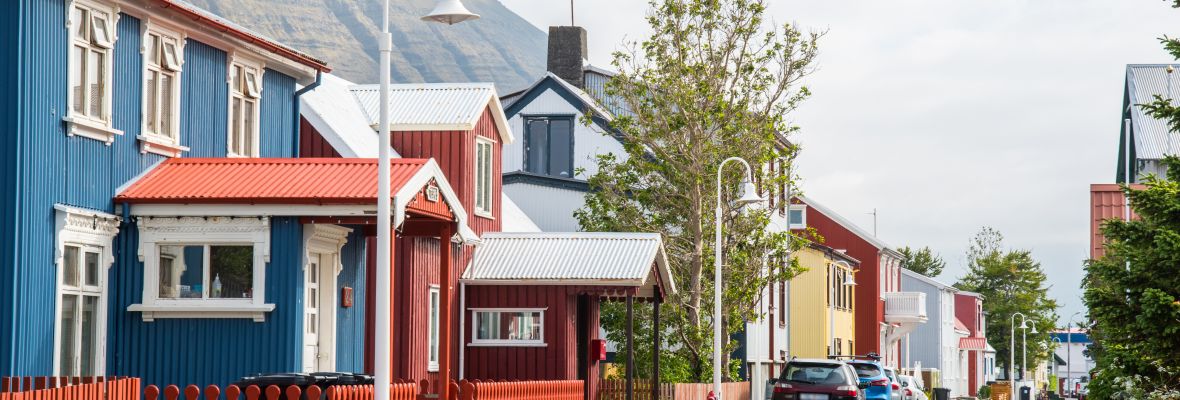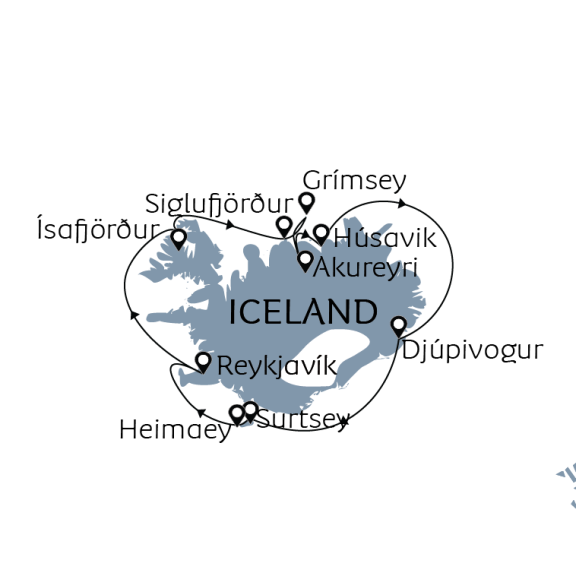Highlights of Iceland
Next DepartureSep. 10, 2025See all departures |
Duration8 daysSee the itinerary |
Activities
, Northern Light |
Circumnavigate Iceland and experience the best this Arctic paradise has to offer. Step onboard to explore the Land of Ice and Fire from the sea, like the Vikings of old!
Iceland has entranced visitors for a thousands years, ever since the first intrepid Norse explorers set eyes on this forbidding island.
This storied land conjours images of burning volcanoes and vast creaking glaciers - however there is so much more to see in this magnificent country. From the small colourful towns circling the coast to the calm cold waters of the fjords, from the freshest local seafood to glorious hikes in nature, from birdwatching to whalewatching, Iceland is a feast for the senses.
This thrilling voyage begins in Reykjavik, one of Scandinavia's most hip and exciting cities, before setting out for the stunning fjords and sweeping mountains of Ísafjörður, the capital of the Westfjords. Next, we head on towards the herring town of Siglufjörður, and the tiny island of Grimsey, where intrepid explorers can stand on the Arctic Circle itself! The next stop is Akureyri, Iceland's second largest settlement, a perfectly formed little city which sits amid lush green hills and miles of wilderness begging to be explored.
Our final stop on the north coast of Iceland is Húsavík, a former fishing town which in recent years has become Iceland's undisputed whale-watching capital. Be sure to join your Expedition Team on the outer decks to watch out for these gentle giants! Our expedition then heads to Djúpivogur, a delightful town in the midst of staggering natural beauty on Iceland's isolated east coast. Soak in one of Iceland's most historic towns, venture inland to experience some of the island's natural wonders, or take a stroll on the town's surreal black sand beach.
We will then head for the island of Heimaey, home to Iceland's largest puffing colony, and a town almost destroyed by a volcanic eruption in 1973. The story of how heroic islanders saved their home can be witnessed in the Volcano Museum, before hiking the lavafields and volcano itself! We will pass by the isle of Surtsey, one of the newest islands in the world in the evening, before returning to Reykjavik the following days.
Exploring Iceland in the early Autumn, we will avoid the summer crowds, visit hard-to-reach communities, and hopefully glimpse the majesty of the northern lights as winter returns to the North.
Experience Iceland with the polar experts. Experience with us!
Facts about Highlights of Iceland
- Arctic
- Iceland
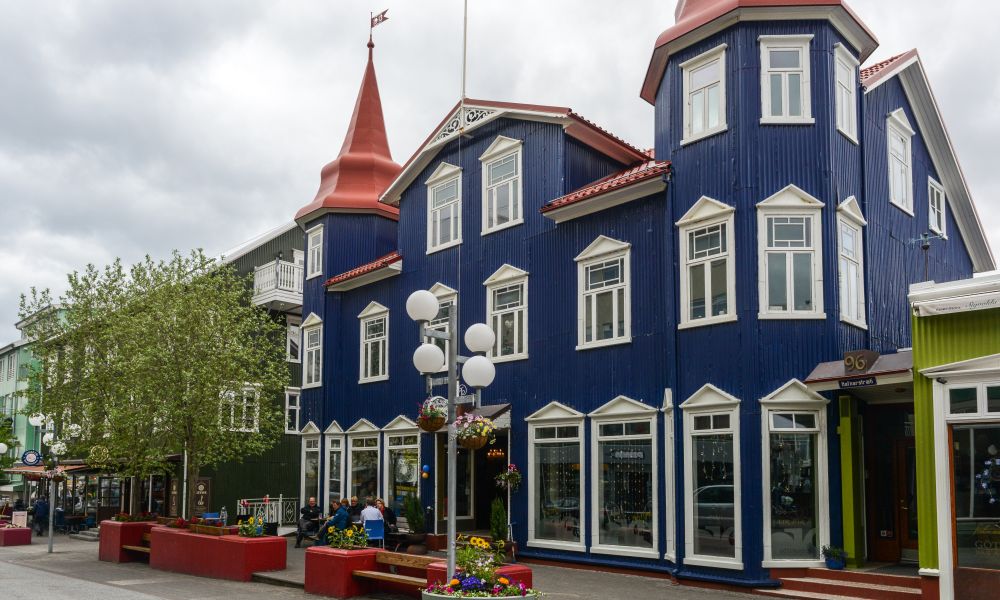
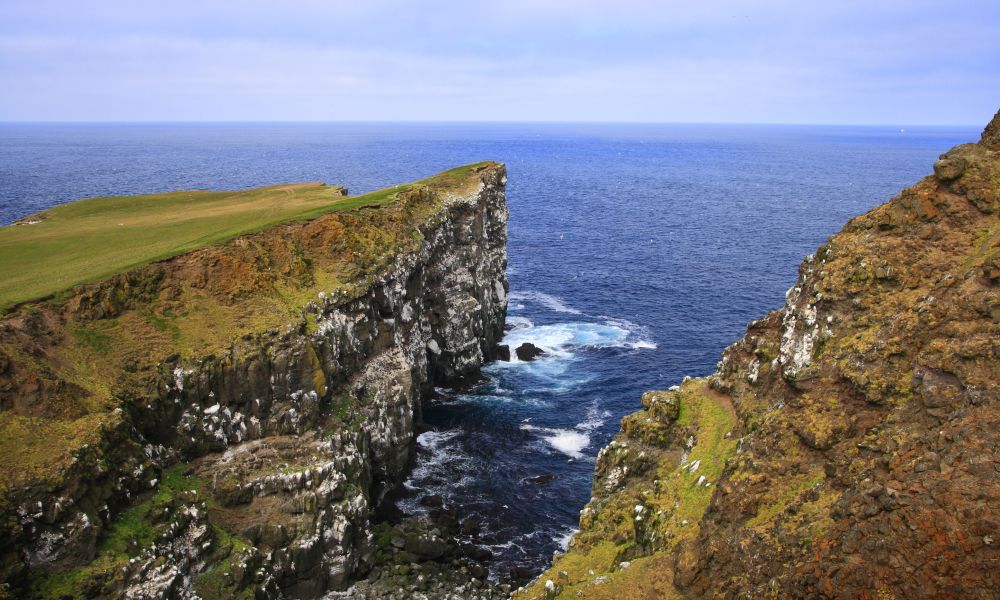

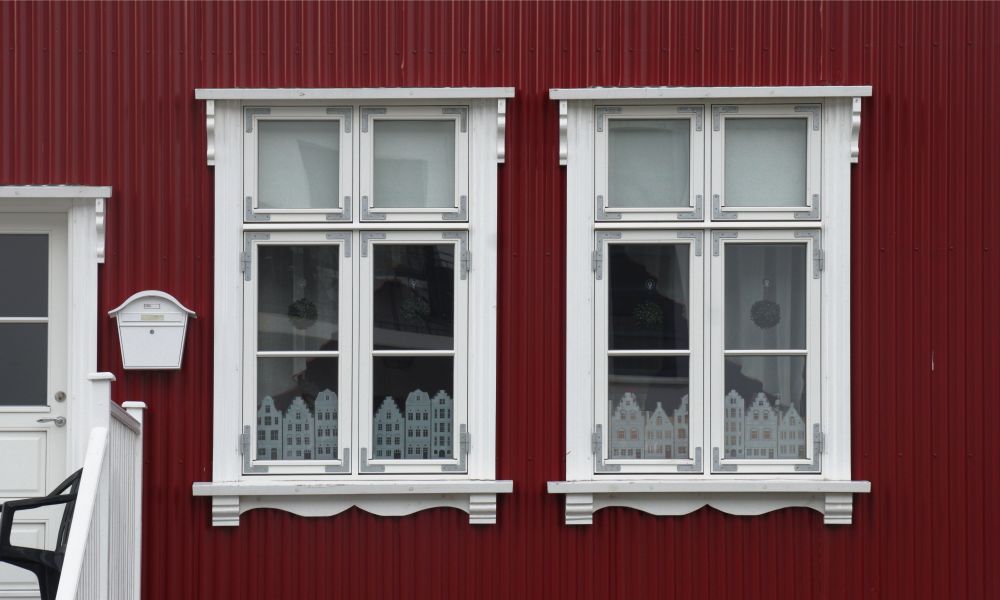
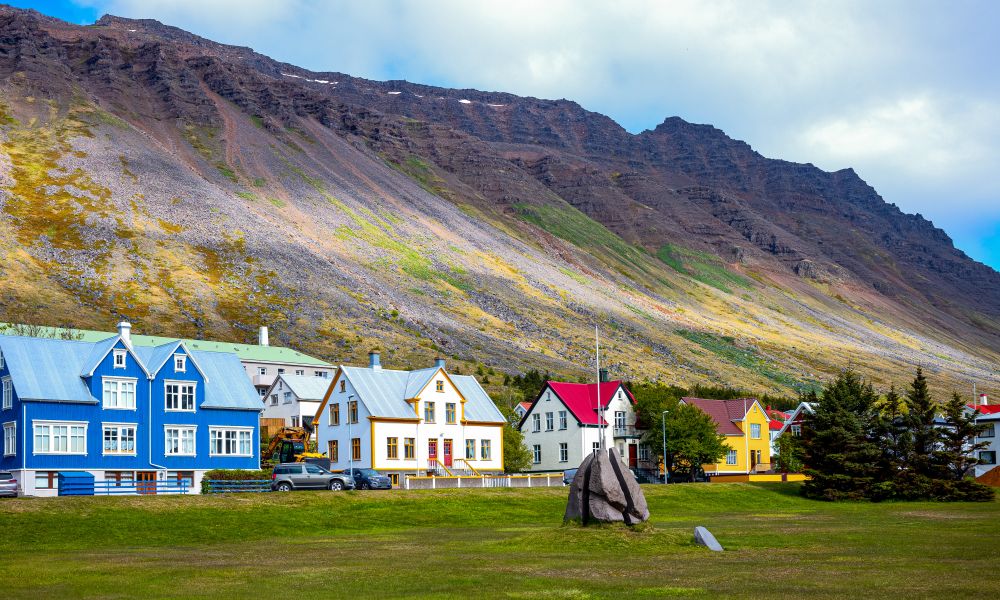
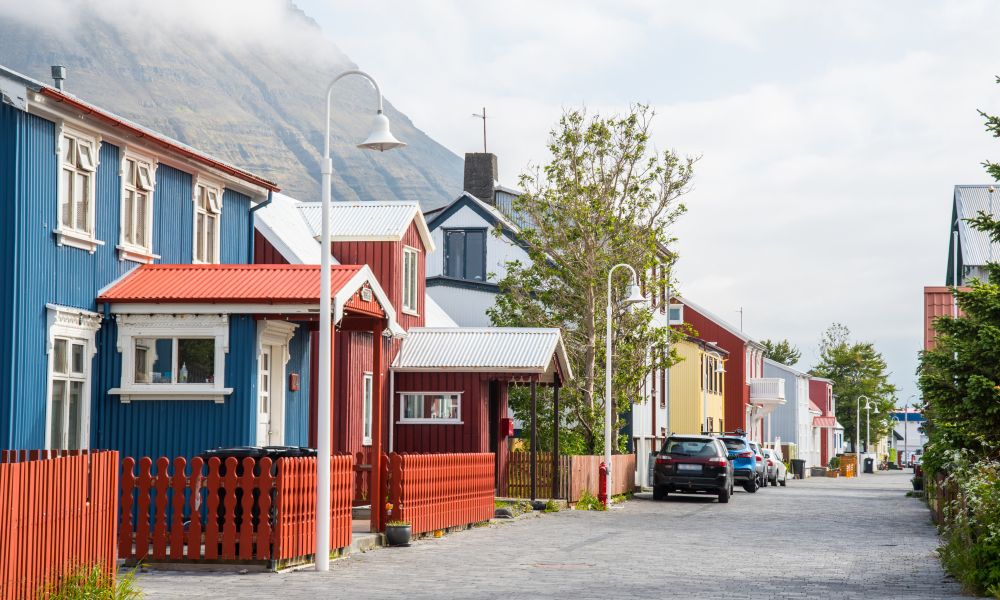
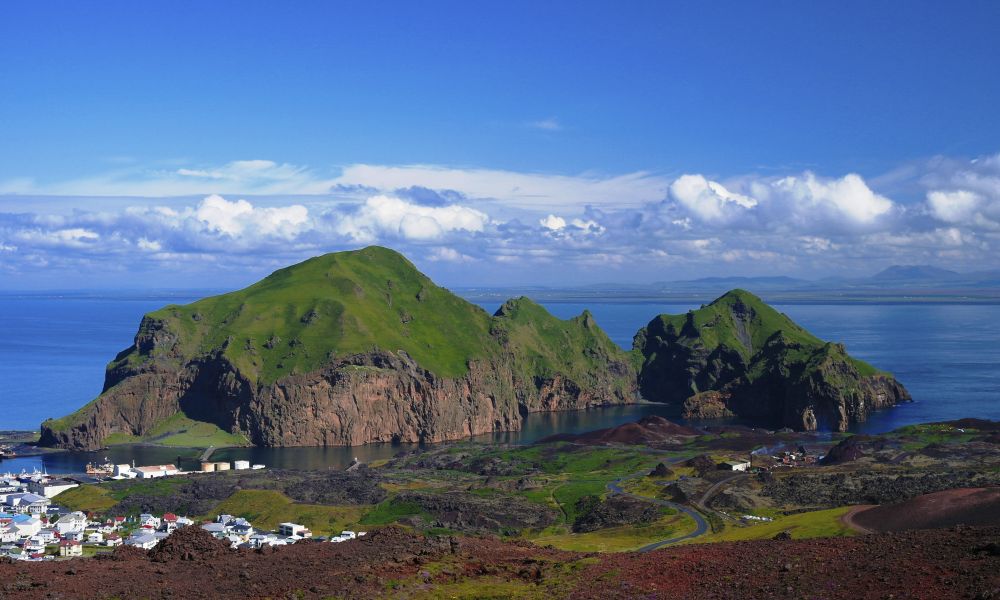
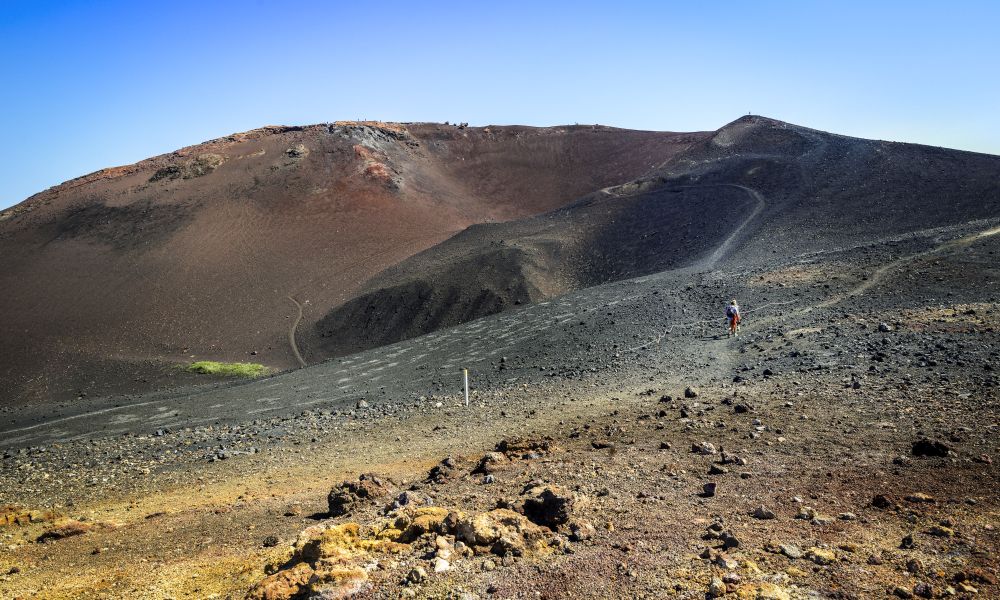
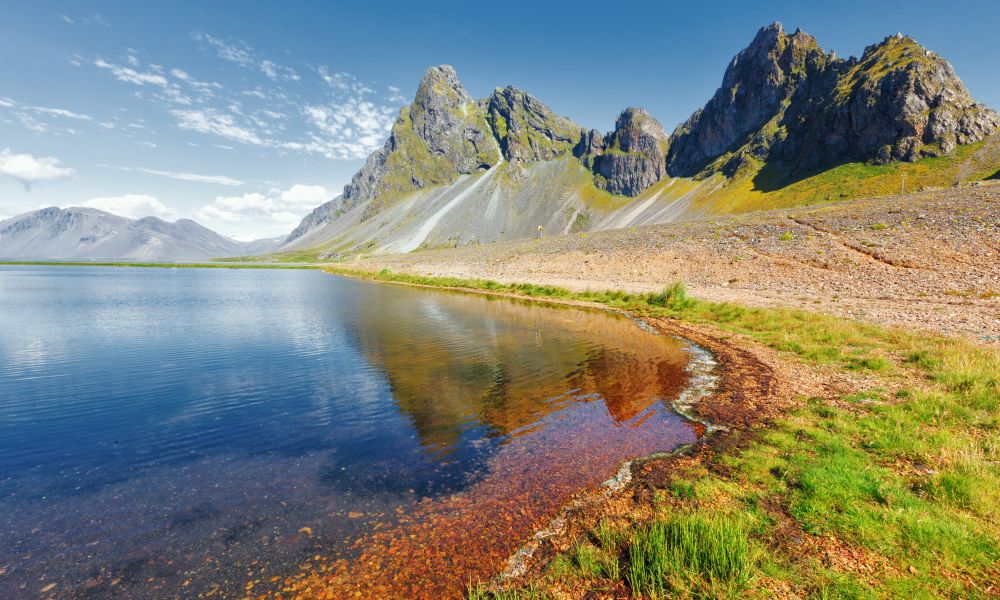
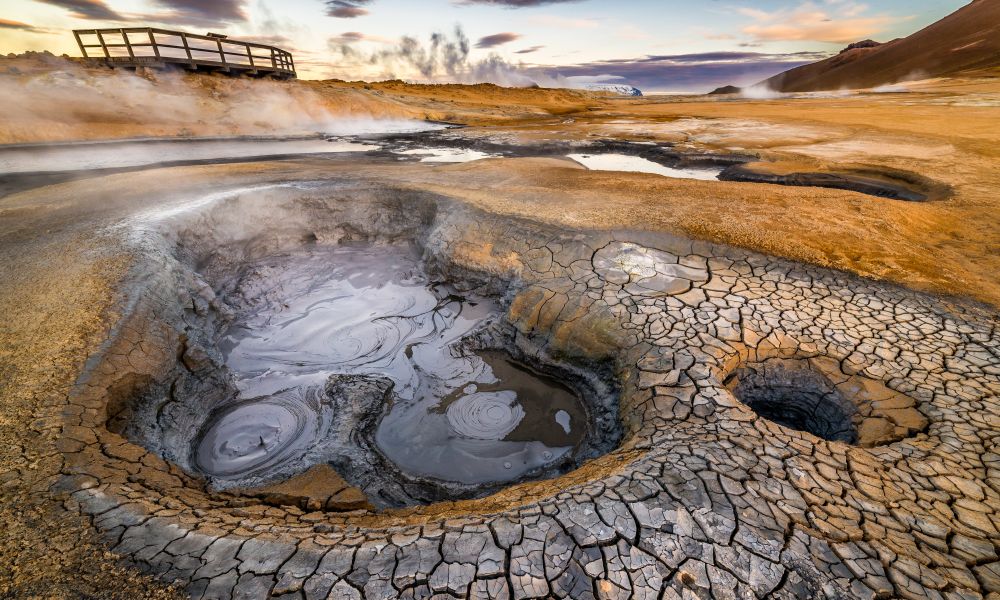
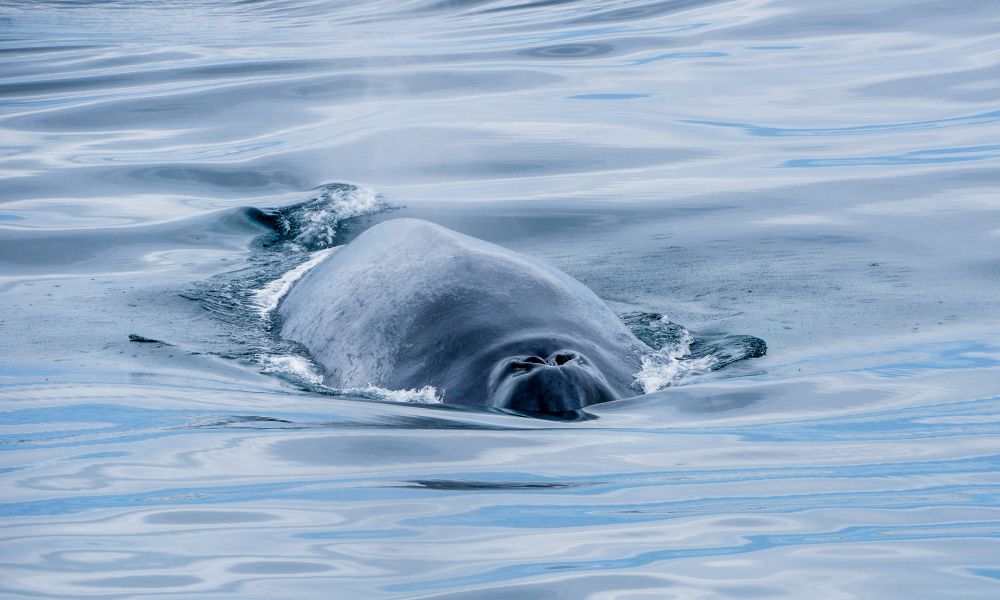
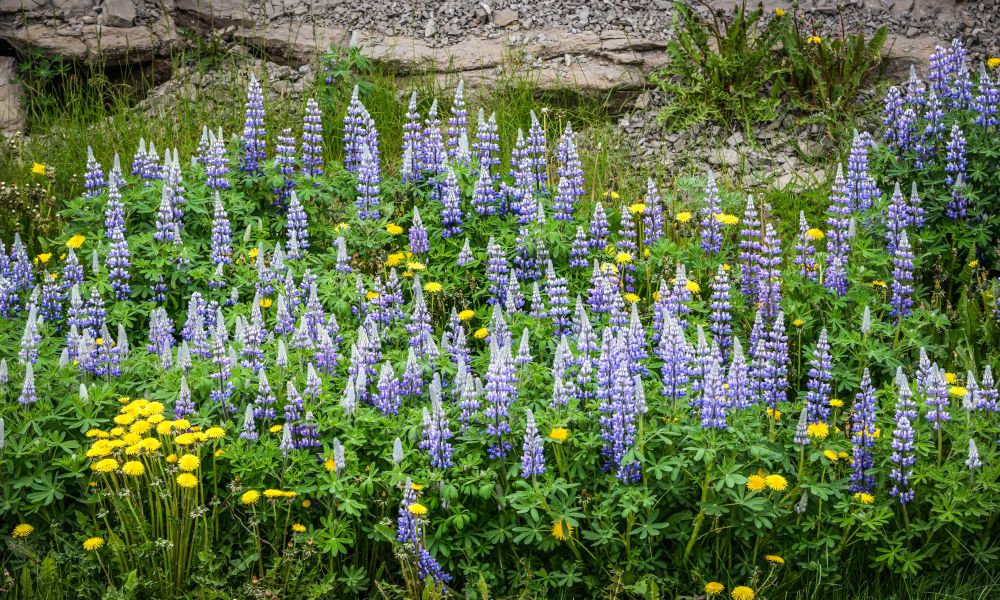
Day 1
Reykjavík, Iceland - Embarkation
The rock-like columns of Hallgrímskirkja Church loom over the city of Reykjavík, a hip Scandinavian capital which needs little introduction. With new Nordic cuisine, excellent shopping, fantastic excursions and an easy relaxed vibe, Reykjavik is one of Scandinavia's most welcoming and exciting cities. Situated in the centre of the North Atlantic, Reykjavík is the perfect place to start Arctic adventures!
Our purpose-built expedition vessel awaits in the city's bustling harbour, awaiting to welcome our guests. After the madatory safety drill, enjoy dinner and a glass of champagne as we follow the thousand-year-old Norse sea route towards the Westfjords.
Day 2
Ísafjörður
Perched on the northwestern tip of the country, Ísafjörður is the largest town in the Westfjords. This staggeringly beautiful region comprises a peninsula of rugged layered basalt mountains, indented by deep fjords. Ísafjörður itself sits on a branch of the large Ísafjarðardjúp, the largest fjord in the region.
Ísafjörður was a sleepy backwater until the 16th century, when increased trade with Europe, combined with the rich fisheries of the area made it an important hub for international trade. In recent years however, population has declined as the fishing industry has become increasingly automated, however the town's popularity with visitors means it is now growing again. Surrounded by the swanky new buildings downtown, this little town feels surprisingly cosmopolitan and urban, with residents and visitors from all around the world. However, the colourfully painted houses, chilly breezes and sweeping mountains around town remind visitors of the remoteness of Ísafjörður, and the miles of untouched nature waiting to be discovered!
Day 3
Siglufjörður and Grímsey
In the morning, Ocean Albatros will arrive in the small town of Siglufjörður, the northernmost town on the Icelandic mainland. Like almost every town in Iceland, the harbour is the heart of the town, which grew from a tiny hamlet to a true town in the 1940s and 50s during the herring boom. This little fish has been the mainstay of the town's economy since time immemorial, and made Siglufjörður one of Iceland's largest towns in the 1950s.
Siglufjörður is a town that has fully embraced its history and identity - everywhere in town, the herring reigns supreme! The Herring Era Museum, a series of period buildings shows the traditional processing of these fish, which continues to this day. The town occupies one of the most stunning fjords (bearing the same name) in Iceland; up to 18 species of birds can be found in the area, making it a hugely popular spot for visitors driving the ring road of Iceland.
Over lunch, we will re-embark Ocean Albatros and reposition from Siglufjörður to Grimsey, a small island off Iceland's northern coast. This tiny emerald island is the only part of Iceland which crosses the Arctic Circle - indeed, it runs directly through the northern half of the island. The spot is marked by a massive concrete sphere "Orbus et Globus", a sculpture which is moved annually to account for tiny changes in Earth's orbit (and therefore in the position of the Arctic Circle). The island is home to only around 70 hardy locals, but also to thousands of seabirds. Watch out for curious puffins peeking out of their burrows, and beware the territorial Arctic terns overhead! The island holds a huge tern population, and workers often have to clear the runway of these elegant yet feisty little birds to allow planes to land. The visit to Grimsey includes a guided walk of the island with local guides.
Day 4
Akureyri
The jewel of northern Iceland, the city of Akureyri is the country's second city. Akureyri occupies the perfect spot, situated at the head of Eyjafjörður, a long calm fjord, sheltering the town from the worst of the Arctic weather. Rich volcanic soils nourish the surrounding hills and fields, which drip with emerald greenery.
Akureyri has less than a tenth of the population of Reykjavik, being home to around 20,000 souls. The city can be reached from the international airport in Reykjavik either via a 40-minute flight, or a 6 hour drive. Nonetheless, Akureyri holds everything you would expect from a much larger city, and locals are justifiably proud of their home. The city has its own cathedral (designed by Guðjón Samúelsson, the creator of Hallgrímskirkja in Reykjavik), a botanical garden (Iceland's first public park) showcasing cold-hardy plants from around the world, a bustling high street lined with traditonal buildings, cosy cafes, restaurants and shops, fascinating museums, and a huge geothermally-heated swimming pool.
The length of the Eyjafjörður makes an excellent natural harbour; subsequently the city is situated further inland than most in Iceland, and typically experiences stable weather, with warmer summers and cooler winters than much of the country. The local microclimate and rich soils make this one of the most agriculturally productive regions in the country, and gourmands here are spoiled for choice, from the excellent locally-raised meat and dairy, to the delectable local seafood harvested from the icy waters nearby.
Day 5
Húsavík
Around the headland from Akureyri lies the town of Húsavík - in many ways a contrast to the neighbouring city of Akureyri. Instead of a deep long fjord, Húsavík sits in a wide open bay, facing the open North Atlantic. While Akureyri is a relatively modern city, Húsavík was the first site ever settled by the Norse in Iceland, when a man called Náttfari established a farm there - probably constructing the first building in Iceland.
While Akureyri remains an important hub of fishing and agriculture, Húsavík is a town which has fully embraced tourism. Although the harbour firmly remains the heart of the town's economy, Húsavík has reinvented itself from its fishing roots as Iceland's premier whale-watching destination. Where harpoon-laden whaling ships once moored, today visitors will see a fleet of whale-watching boats, from refurbished sailing vessels to sleek modern watercraft, waiting to take visitors out to see the gentle giants of the deep.
Húsavík has several other options for visitors wishing to stay on land. Despite its tiny size, the town holds several museums, including the Húsavík Whale Museum, a must-visit for those who want to learn more about these majestic animals, which is an important part of local conservation research. The Town Museum detailed life in Húsavík in the old days, while The Exploration Museum covers everything from the early Viking explorers to the Apollo astronauts (who trained near Húsavík in the 1960s). For music fans, the newly opened Eurovision Museum details Iceland's outsized role in the beloved song competition. Of course no trip to Iceland would be complete without a soak in a hot spring - take a stroll out of town to the Geosea Spa for a dose of wellness and relaxation with stunning sea views.
Day 6
Djúpivogur
Sitting on the southeastern coast of Iceland, Djúpivogur is a small port town, and the closest port in the country to the Faroe Islands, Scandinavia and mainland Europe. It is therefore a very popular port of call for vessels exploring the North Atlantic, despite its small size. Like most towns in Iceland, the village is clustered around the harbour, which has been the center of town life since the town’s founding in the late 1500s as a trading post. Off the coast is the small island of Papey, which may have been home to hermit Irish monks even before the Norse settlement of Iceland. Fishing has been the main industry in the town since it’s founding, recently supplanted in importance by tourism.
Djúpivogur sits on the Búlandsnes Peninsula, surrounded by fjords on two sides, and backed by rugged mountains including the pyramidal Búlandstindur, which is known throughout the country. The town contains several public artworks such as the Eggs of Merry Bay (Eggin í Gleðivík), 32 stone eggs representing the 32 species of birds which can be seen locally. Just above the harbour is Langabúð, one of the oldest buildings in Iceland – it has variously been used as a warehouse and slaughterhouse, and today houses an excellent café with a small museum. The cakes are excellent.
With vast areas of untouched wilderness just beyond the town, Djúpivogur is a popular location for hikers and adventure seekers. While the mountains outside town are challenging, there are several shorter routes closer to town which are more appropriate for casual hikers. The scenery and nature (especially the carpets of early summer flowers) are spectacular. The area is one of the best places in Iceland to birdwatch, with a huge variety of habitats, including cliffs, beaches, lagoons, grasslands and river deltas. Binoculars are essential!
Day 7
Heimaey and Surtsey
Heimaey is the largest island of the Vestmannaeryjar (Westman Islands), a small archipelago which comprises Iceland’s southernmost point. Vestmannaeyjabær is the only town on the islands, situated around the harbour on the northern side of Heimaey. Irish and Scottish hermits may well have inhabited the islands prior to Norse settlement. These men were known as ‘Vestmann’ (‘Men from the West’) by the Norse. Indeed, archaeological evidence indicates human presence on Heimaey around the year 800, before the traditional settling date of Iceland.
Volcanic eruptions are never far away in Iceland, and on 23rd Jan 1973, a 1600m fissure opened on Heimaey, spewing lava. Through the night, residents of the island were evacuated (mostly on fishing boats), however ash began to cover the town and lava flowed through the streets. Even more catastrophically, lava began to flow toward the island’s perfect natural harbour (the hub of the islands’ economy and transport). Recognizing the risk, locals began a project to divert the lava by spraying it with cold seawater, which remains the most successful lava diversion ever attempted. The harbour was saved, and the island had grown by around 20%. These events were reported worldwide, and the island saw a boom in tourism after the eruption, which has continued to this day.
The island is today home to around 4500 people, but is famed worldwide for its seabird colonies – around eight million puffins can be found on the island in summer, which draws huge numbers of tourists. During spring and summer nights, local children arrange patrols to find chicks confused by the town lights, and release them from clifftops during daylight. The lava flows and the summit of Eldfell (meaning ‘Fire Mountain’ in Icelandic) can all be reached on a pleasant hike from the harbour. The views over the island, of partially-buried buildings from the eruption, and the volcanic vents themselves are all breathtaking.
In 1963, a submarine volcanic eruption began around 18km southwest of Heimaey. This eruption resulted in a new island being formed, one of the youngest in the world. Named Surtsey after Surtr, a fire-giant of Norse mythology, the island continues to be a magnet for volcanologists and biologists, who come to study the geology, and the colonization process of new islands by plant and animal species. Cruising past the island is permitted, but the island can only be visited by scientists, as it is not only dangerous, but is a vital scientific case study.
Day 8
Reykjavik, Iceland - Disembarkation
In the early morning of the eighth day of our voyage, Ocean Albatros will sail into the calm waters of Reykjavik Harbour. After a hearty breakfast, it is time to bid a fond farewell to the Crew and Expedition Team of Ocean Albatros, and descend the gangway back to dry land with memories of the voyage of a lifetime.
Inclusions
- 8-day/7-night cruise on Ocean Albatros in a shared outside double room with a private bathroom in the category chosen
- English-speaking Expedition Staff
- Near-port walks with the Expedition Team
- Zodiac landings
- Information briefings and lectures by the Expedition Team
- Special photo workshop
- Full board on the ship
- Dinner drink package
- Free coffee, tea, and afternoon snacks on the ship
- Welcome and farewell cocktails
- Taxes, tariffs, and landing fees
- Digital visual journal link after the voyage, including voyage log, gallery, species list, and more
Exclusions
- International flights
- Extra excursions and activities not mentioned in the itinerary
- Single room supplement and cabin upgrades
- Meals not on board the ship
- Beverages (other than coffee and tea and dinner-drink package)
- Tips for the crew (we recommend USD 16 per person per day)
- Personal expenses
- Transfer to/from the ship
- Travel, cancellation, and senior insurance
- Anything not mentioned under ’Inclusions’
After leaving the bustling city of Reykjavik, your expedition vessel will set a northward course into the wilds of Iceland. The goal for the days spent exploring Iceland is to offer activities which will allow everyone to explore off the ship as much as possible, and experience the nature, settlements and culture of Iceland in person.
Our activities will vary widely according to the nature of the locations we visit – some larger settlements need an entire day to explore, whereas some smaller villages and wildlife hotspots can be seen in a few hours. Activities we offer include landings (where a variety of excursions may be offered), Zodiac cruises and ship cruises. No matter the day’s planned activities, the onboard Expedition Team and Expedition Leader will work as hard as possible in conjunction with the Captain and Crew to maximize exploration opportunities.
A “typical” expedition day in Iceland may look like this (subject to weather and sea conditions and sailing schedule):
- 06:45: Wake-up call
- 07:00-08:00: Breakfast
- 08:30-11:30: Morning activity – arrival in port at anchor, Zodiac ashore to explore settlements, historical sites etc. Depending on the location, we may spend the whole day in port.
- 12:30-13:30: Lunch onboard
- 14:30-17:30: Afternoon Activity – Either in connection with the morning, or at a different site, depending on itinerary
- 18:30-19:30: Evening Recap with Expedition Team
- 19:30: Dinner
Landings are a great opportunity to stretch your legs and set foot on shore to visit the towns and villages of Iceland, and experience Arctic nature first-hand. Our experienced Expedition Team will be on shore to help you spot any wildlife, identify the different species of birds, guide you through settlements, facilitate any shore excursions you choose to join, as well as keep our guests safe on shore from any potential hazards.
We remind our guests that Iceland is a truly wild destination, to consider their physical capability when travelling in the country. In smaller towns and villages, infrastructure for tourism may be less well developed than in other destinations. Most smaller towns and villages lack step-free access, and roads and paths can often be steep and uneven.
Iceland is a country which offers excellent opportunities to explore further away from port towns, with incredible places to visit throughout the country. Albatros Expeditions offer a carefully curated selection of excursions on shore, usually with several options per port. In some smaller ports, excursion offerings may be more limited. We always aim to work with local companies and local guides, to give our guests the best possible experience of Iceland. We will always aim to accommodate our guests choice of shore excursions, but we remind guests that Iceland is a small country with many small communities where tour capacity may be limited.
While activites ashore are important, your experience onboard is too! Other activities onboard include our ship Gym, where you can burn some calories on our fitness bicycles or treadmills; most of our ships even have other cardio machines and strength/lifting options. Our new purpose-built ships have a Spa, in which guests can enjoy massages, facials, and other relaxing treatments (additional cost applies). Our Library is a great place to rest between outings, with expansive views and a wide selection of reading material. During your voyage you will also be able to enjoy our tea time in the late afternoon, or indulge in some retail therapy in our onboard Boutique, which sells personal necessities as well as specially-selected souvenirs.
In between our landings and activities we offer three hearty daily main meals. Albatros Expeditions always have allergy flexible options, healthy selections as well as a variety of vegetarian and vegan options.
Our hardworking galley crew deliver multiple Breakfast options, served in a buffet style along with a cooking station where eggs are made to order. At Lunch we are also met with a smorgasbord of mouthwatering choices. Safe to say you will have the energy for your next outing!
When it is Dinner time, you can choose to eat at the main restaurant or book a table at the Specialty Restaurant. Your evening meal is served a la carte, with fresh new options daily and always a selection of fixed items. There is always a vegetarian and pescetarian option available. Albatros Expeditions are known for our delicious menus and a variety of exquisite wine pairings.
Onboard you will also have the option to join Afternoon Tea with sweet treats, cakes or snacks served each afternoon. Albatros Expeditions have tea and coffee freely available all day throughout the vessel, while specialty coffee, alcoholic beverages and hand-crafted cocktails are available at the ship’s bars.
This voyage departs Reykjavik in Mid-September, at the end of the brief Arctic summer. The days are shortening and the days are getting colder, but the snows of winter are still restricted to high mountaintops. Iceland is a popular destination for international visitors, but most have departed by mid-September, meaning we will avoid the summer crowds.
As autumn sweeps into the Arctic, the face of Iceland changes. The endless light of summer is gone, replaced by breathtaking sunrises and sunsets which last for hours. By mid September, true darkness returns to the Arctic skies, offering the chance to see one of the biggest bucket-list items in the Arctic - the Northern Lights!
Iceland is synonymous with challenging weather. Unfortunately, warmth and sunshine does not spring to mind when one considers this wild country! Fortunately, the brutal reputation of Icelandic weather abates somewhat in summer. While wild, wet and windy conditions do occur, bright sunny days are equally common.
Iceland's maritime climate is heavily influenced by the surrounding North Atlantic. While generally cool and temperate, calm windless days can feel warm - even hot if you manage to escape the wind! However, the weather is highly changeable, and wind, rain and fog can occur without warning. As the saying in the region goes - 'if you don't lilke the weather, just wait ten minutes!'
We therefore remind our guests to be prepared for all weather conditions! We highly recommend to our guests to dress in layers (ideally in woolen or synthetic fibers) and a backpack so that layers can be adjusted as the weather dictates. Warm/waterproof layers, hats, waterproof gloves and scarves are recommended for all excursions off the vessel, even on the sunniest days – the weather can deteriorate rapidly at any time. Sun protection (hats, sunglasses, sunscreen and lip balm) is also essential – the low angle of the sun combined with cool ambient temperatures can cause sunburn to easily go unnoticed until it is too late!
Albatros Expedition strives to employ the very best Expedition Team in the whole industry. We travel in some of the planet’s most remote regions, where planning and on-location experience is key. Our routes and itineraries are subject to the prevailing sea, weather and wind conditions, which are closely monitored by the Bridge Team and Expedition Leader. Drawing on their vast experience, they find the best alternatives in the rare instances where our planned itinerary needs to be changed. Each cruise is a completely unique combination of locations, where the highlights can often be the totally unexpected. Most of our cruises provide the opportunity to spot a variety of unique wildlife, although this is subject to the whims of Mother Nature and can of course not be guaranteed. As you will no doubt experience, the joy from our Expedition Team when spotting different species on land or at sea is as genuine as your own.
This means that you as our guest are part of an adventure, a true expedition, where plans change, wildlife is encountered on their terms and your team consists of the very best experts within their fields. We strive to maintain a mix of specialists within relevant polar subjects including marine biology, ornithology, earth science, history and others. Albatros Expeditions boast a large number of Expedition Staff onboard, allowing us to maintain a high ratio of staff-to-guests at 1:8, amongst the highest ratios in expedition cruising. Some of our staff have decades of experience on ships or research stations, whilst others may be performing their first season. One thing they all have in common is the wish to make each and every journey a special and memorable experience for our guests. Knowledge, skill, and passion are the trademarks of all Albatros Expedition Staff.
To ensure the safety and quality of experience of our guests, please keep in mind that the itinerary and outdoor activities during each voyage are solely dependent on weather and sea conditions. Your safety is our highest priority. The route and shore landings will be determined by the Captain and Expedition Leader and communicated to guests through regularly scheduled briefings. Albatros Expeditions reserves the right to modify the landings and locations visited during a voyage based on local weather conditions and climate to ensure a safe and enjoyable experience for all our guests. Our voyages are expeditionary in nature, and thus changes to timings are commonplace due to the environment we operate in, as well as wildlife opportunities and locations.



